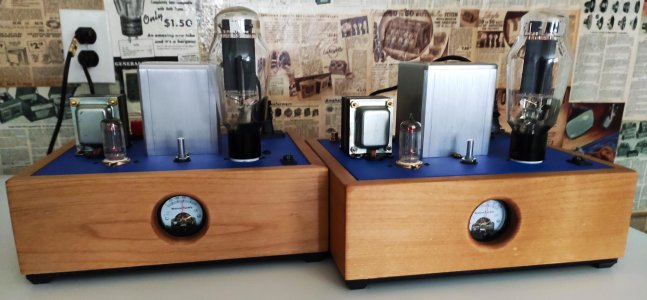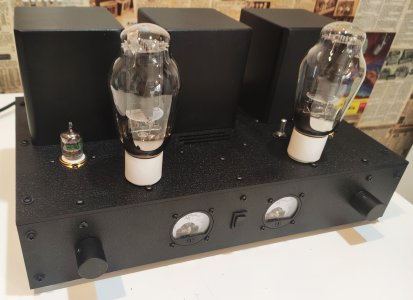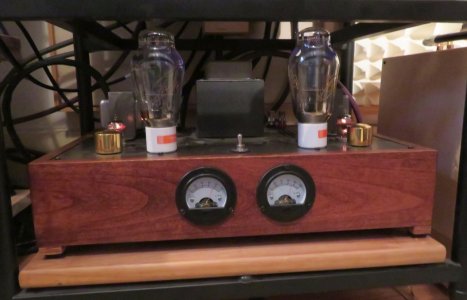You are using an out of date browser. It may not display this or other websites correctly.
You should upgrade or use an alternative browser.
You should upgrade or use an alternative browser.
adding a mA meter to the Kaiju
- Thread starter Larpy
- Start date
Larpy
Member
I added a couple of meters. Pretty straightforward procedure. Now for one last question: both channels of my Kaiju have 72 mA of current going through the cathodes. I assume that as the tubes age, the mA measurement will go down(?). At what point should I become alarmed and think about getting replacement tubes?
Attachments
Paul Joppa
Moderator
There are many ways a tube can fail. But if it is simply worn out, the cathode loses emission. An often used criterion is when the transconductance drops to 70% of new. For Kaiju, that amounts to about 4mA reduction in current. This is a small change and hard to see on a meter! Even worse, it's sensitive to power line voltage - a 5% change in the power line has the same effect as a 30% change in transconductance.Larpy said:I added a couple of meters. Pretty straightforward procedure. Now for one last question: both channels of my Kaiju have 72 mA of current going through the cathodes. I assume that as the tubes age, the mA measurement will go down(?). At what point should I become alarmed and think about getting replacement tubes?
The reason it's so small is the self-adjusting nature of cathode resistor bias.
I have some very dead 300Bs that still draw about 70mA, it can be pretty tough to tell in a Kaiju!Larpy said:I assume that as the tubes age, the mA measurement will go down(?). At what point should I become alarmed and think about getting replacement tubes?
Larpy
Member
johnsonad said:Nice job Larry! That looks great and a really nice looking build!
Thank you, Aaron. I still plan on springing for the Takatskis you recommended. A matter of when, not if.
Yes.Larpy said:So the appeal of adding meters is mostly cosmetic?
Natural Sound
New member
Paul Birkeland said:Yes.
Is that true of the MonAmour 2A3 as well or is the meter more useful in the 2A3 topography?
Paul Joppa
Moderator
The MonAmour has a switch which changes the 2A3 plate current, and in the high-current mode it requires a modern 2A3 with higher plate dissipation rating than old-stock 2A3s. So the meter indicates the current to help prevent accidentally risking older tubes.
Natural Sound
New member
Thanks for the explanation P.J. That is a very useful feature indeed. You guys always think of clever stuff like that.Paul Joppa said:The MonAmour has a switch which changes the 2A3 plate current, and in the high-current mode it requires a modern 2A3 with higher plate dissipation rating than old-stock 2A3s. So the meter indicates the current to help prevent accidentally risking older tubes.



